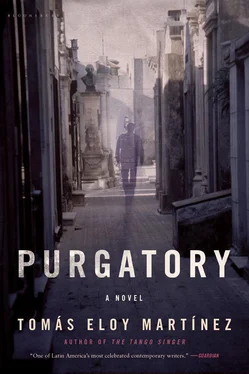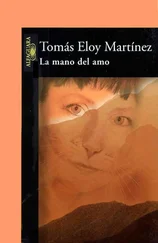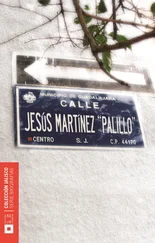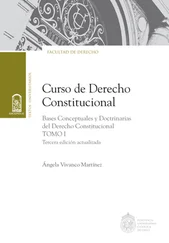I felt so comfortable in the hour and a half I spent with her, so surprised by her erudition, by the enthusiasm with which she bounded from one subject to another, that I invited her to join me for coffee at Starbucks in New Brunswick the following Saturday. When I called her at the Hammond offices on Friday to confirm, she asked me to swing by and pick her up half an hour earlier. She had something she wanted to show me, she said, and a story she wanted to tell me.
When I arrived, she was standing waiting for me on the stoop wearing jeans and sneakers with her hair pinned up. Only in that morning light did I notice that her eyes looked tired, her eyelids heavy, as though one half of her was hidden beneath the waning moon of her face.
‘You know Loews cinema on Route 1?’ she asked me.
‘Sure,’ I said. ‘Everyone does.’
‘Then you’ll know that there’s a grave in the middle of the parking lot.’
I was surprised, because I didn’t know, though I park there every time I go to the movies. Sometimes, on summer nights, I drive up to the hill overlooking Raritan and gaze down at the gently flowing river and the lights on the far shore where my house is.
‘What grave?’ I asked.
‘Come on, I’ll show you.’
The vast wasteland of concrete behind the cinema stretched out in front of us. I parked next to a squat brick wall with an iron railing running around the top, as unremarkable as the oblique, lukewarm mid-morning sunshine. I had driven past dozens of times assuming it was an electrical substation, or a vent for the cinema’s air-conditioning system.
‘This is where they buried Mary Ellis,’ Emilia said. ‘According to legend, beneath her ashes are the ashes of her horse. If you come closer you can see her gravestone.’
I’d vaguely heard of Mary Ellis at some teachers’ meeting, but always assumed she was a fictional character, someone from some unfinished novel by one of the Brontë sisters. But the delicate marble bust depicted a real woman with a long nose and ringlets in her hair, and underneath, her dates, cut into the stone: 1773–1794.
‘Mary Ellis’s diary is in the Princeton manuscript library,’ Emilia told me as we sat down in Starbucks on George Street with our cappuccinos. ‘According to their records, nobody ever bothers to read it. The information about her childhood I’ve managed to find in encyclopedias on New Jersey is not very reliable, but what Mary herself wrote — her story — is as moving as Cathy Earnshaw’s confession in Wuthering Heights . Mary, as she herself says many times, was the man she loved. At eighteen, she became engaged to a young lieutenant called William Clay. Mary was an orphan, she had no dowry and lived with a paternal aunt in a house in New Brunswick. Once or twice a week she would ride down to the riverbank to meet with Clay alone. The townsfolk talked. When the pastor of the local Presbyterian church gave a sermon about couples who outraged decency and courted the wrath of God, a number of accusing faces turned to stare at her. But Mary didn’t think the sermon referred to her. She was about to get married; she was happy. Two weeks before the wedding, Lieutenant Clay asked her to meet him urgently at their usual place by the river. There, he told her that he had been called up to quell a farmers’ uprising in Pennsylvania and was due to ship out that night. “Within the month,” he told her, “I will come back for you; I’ll hoist a yellow shawl on the mainmast and announce my arrival with two shots from a harquebus. Then we shall be able to marry.” As proof of his love, Clay gave her the magnificent black horse he had inherited from his father. A month passed, and then another. News eventually reached New Brunswick that the uprising had been quelled in a matter of hours without a shot being fired and the troops had been given leave. After she heard this Mary would saddle the black horse every afternoon and ride to the clifftop overlooking the Raritan. Her diary begins here, in the first week of her wait. She gives a detailed account of her daily two-mile ride, describes the countryside in rain or fog and her trepidation whenever a ship hove into view.’
‘I don’t know much about you,’ I said, ‘but I can’t imagine why you find Mary Ellis so fascinating.’
‘There’s no need to imagine. We have one thing in common: neither of us ever saw the man we loved again. Two years later, Mary found out that Lieutenant Clay had married the heiress to a South Carolina plantation. Yet still she went every afternoon to the same place by the river for a meeting with no one. Her diary after this is confused. She was losing her mind. In the autumn of 1794, when the waters of the Raritan rose to record heights, Mary rode out to the clifftop and, with her horse, leaped into the torrent without even leaving a note.’
‘She didn’t need to.’
‘When her body was found at Perth Amboy near the mouth of the Raritan, Mary was still clinging to her horse, her feet still in the stirrups. No cemetery was prepared to give her a Christian burial so devout hands buried her on the hilltop and her horse with her. The grave was constantly covered with flowers and became a place where young girls would go to tell their tales of lost love, so the governor of Jersey declared the plot of land sacrosanct. In the years that followed, the land around it was used as a pig farm, later a restaurant, then a flea market. Now it’s a cinema, though lovers no longer come to visit the tomb. But every time someone stops in front of the grave, they see the image of a woman, scanning the horizon, waiting for her lover to return.’
‘So this is the story you wanted to tell me,’ I said.
‘No. I wanted to show you Mary Ellis’s grave, but the story I called you about is my own. You said you don’t know very much about me. From that first time we talked in the Bagel Cafe I’ve been thinking I’d like to tell you something more about me. But I don’t know if we’ll have time right now. It’s noon. You need to get back to the university.’
‘I’m free until two o’clock.’
I invited her to split a salad at Toscana, a quiet, discreet restaurant nearby. I regretted the offer almost immediately. Words poured from Emilia in that frantic torrent of those who spend too much time alone. I was afraid I would be bored.
The wind had picked up; the only people walking along George Street were a few idle students and shop workers finishing their shift. I was overcome, as so often, by a feeling of melancholy at being so far from my own country, in this foreign suburb in which nothing ever happened.
Within ten minutes, Emilia had filled in the trivial details of her friendship with Nancy Frears, the emptiness of her weekends, her routine of bingo, Mass on Sundays, trips to the beauty salon. Books and films, she told me, had saved her life. She said sometimes she was terrified that, like Mary Ellis, she would lose her mind.
‘More than once I’ve woken up in the middle of the night with the feeling that my husband is in the room.’
‘There’s nothing strange about that. It happens to all of us. We’re dreaming and when we wake up the dream lingers for a while.’
‘No, it’s more real than that. I feel that Simón is standing by the door to my room, not daring to come in.’
‘It’s because you never saw his body. That’s why.’
‘Who knows? The courts declared him dead and I did everything I could to kill him inside me. Because he had no grave, I was his grave. Now he wants to leave it.’
‘You should buy a cemetery plot for him, even if it’s only symbolic. Bury everything you have of his somewhere.’
‘I don’t have any of his clothes or his things any more. All I’ve got is a photo and a wedding ring. I couldn’t bring myself to bury them.’
Читать дальше












